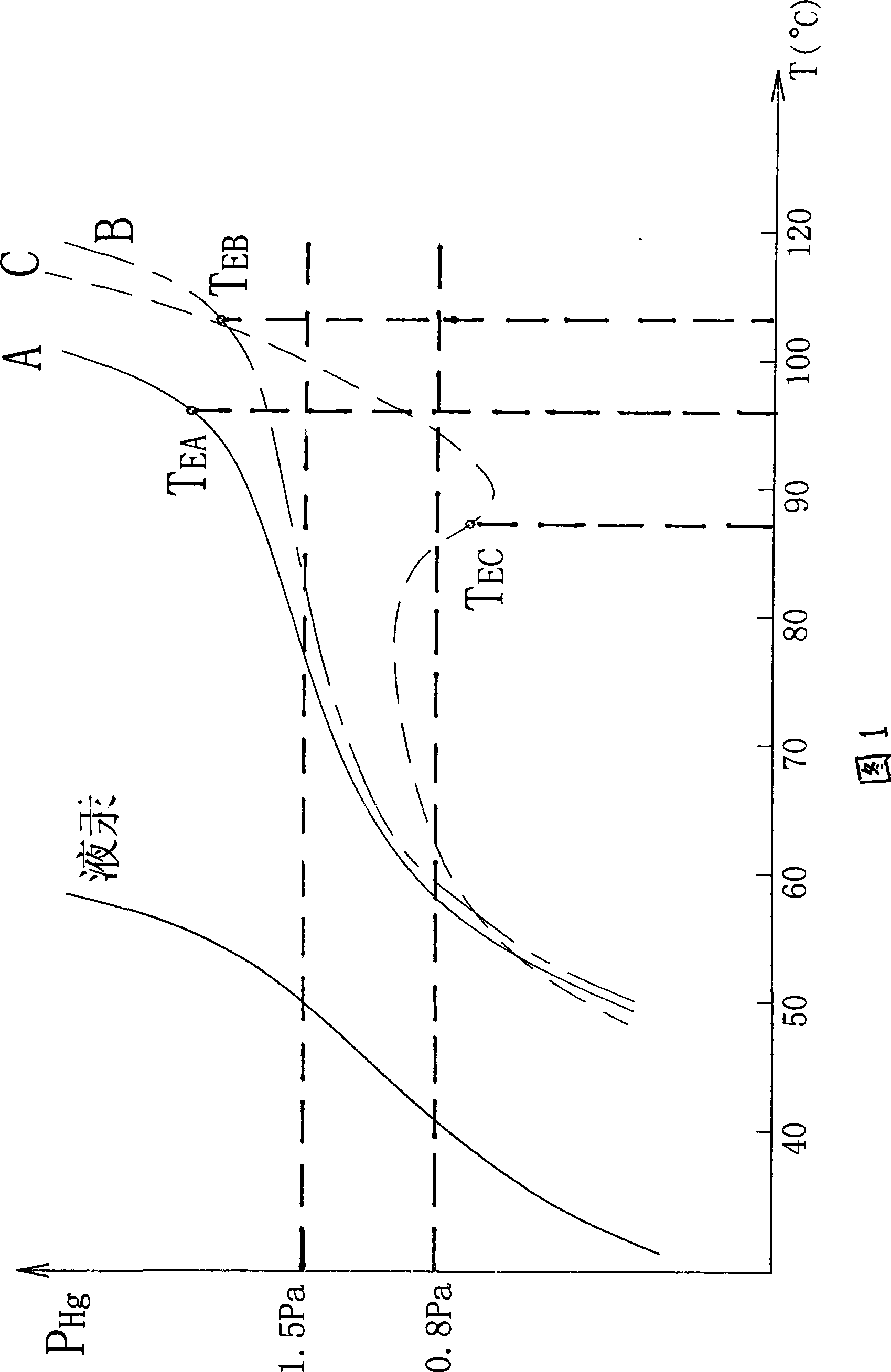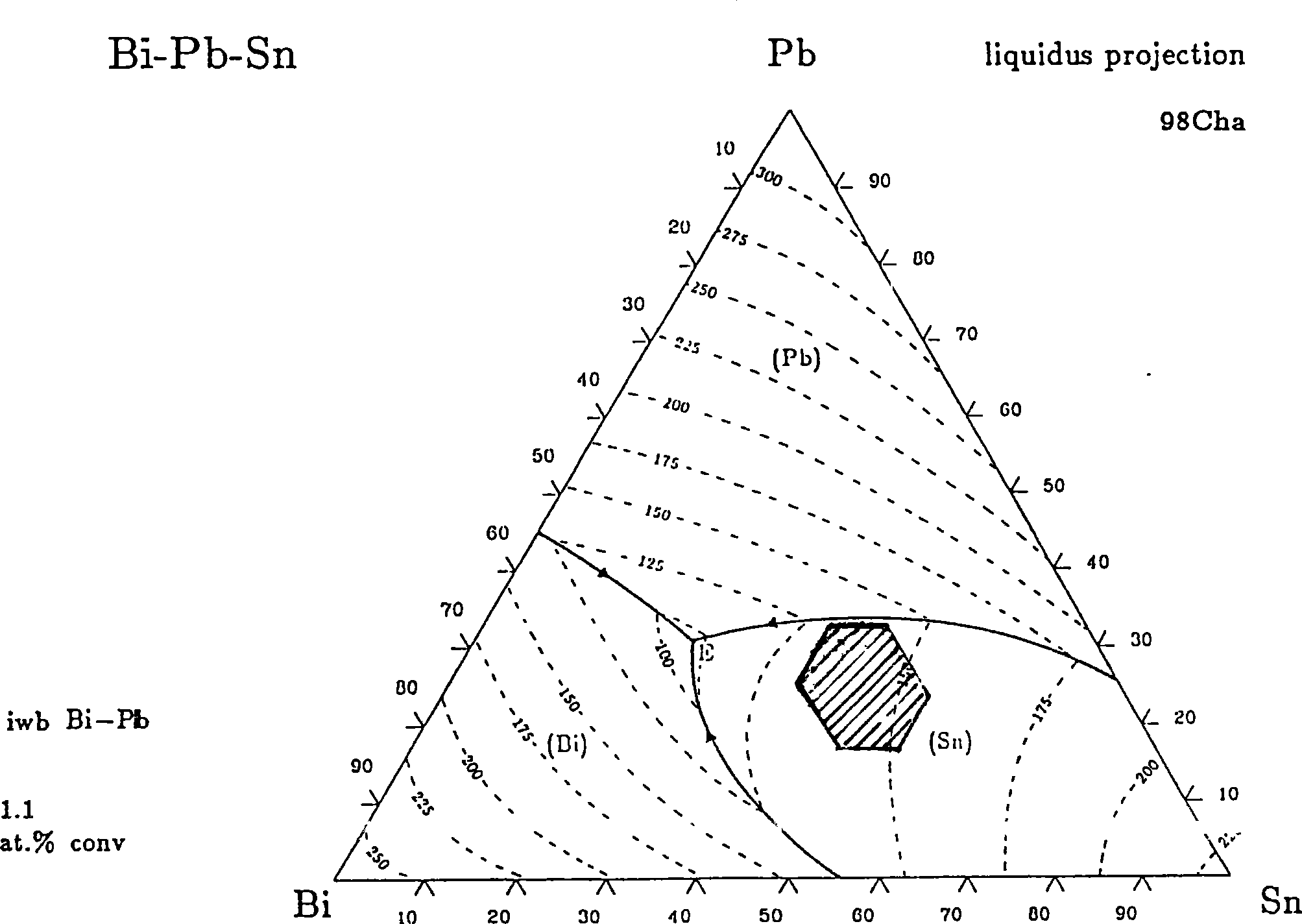Bi-Pb-Ti-Hg alloy for low pressure Hg discharge lamp
A discharge lamp and low-pressure technology, applied in the field of bismuth-lead-tin amalgam, can solve the problems of reduced radiation efficiency, low luminous efficiency, large dispersion of optoelectronic parameters, etc., and achieve the effects of improving stability and high luminous efficiency
- Summary
- Abstract
- Description
- Claims
- Application Information
AI Technical Summary
Problems solved by technology
Method used
Image
Examples
Embodiment 1
[0015] Example 1: The bismuth lead tin amalgam was melted and dropped into pellets by mass ratio (m / m): Bi:Pb:Sn:Hg=30:40:25:5. Among the 11w compact fluorescent lamps with outer bulb, the average luminous efficiency is high, and the light output of the lamp is stable and consistent.
Embodiment 2
[0016] Example 2: The bismuth lead tin amalgam was melted and dropped into pellets according to the mass ratio (m / m): Bi:Pb:Sn:Hg=45:22:30:3. Among the 13w compact fluorescent lamps with outer bulb, the average luminous efficiency is high, and the light output of the lamp is stable and consistent.
Embodiment 3
[0017] Example 3: Bismuth lead tin amalgam is made into pellets by mass ratio (m / m): Bi:Pb:Sn:Hg=32:27:40:1, which can be applied to pipe diameter φ10mm and power 9 -15w in compact fluorescent lamp with outer bulb.
PUM
 Login to View More
Login to View More Abstract
Description
Claims
Application Information
 Login to View More
Login to View More - R&D
- Intellectual Property
- Life Sciences
- Materials
- Tech Scout
- Unparalleled Data Quality
- Higher Quality Content
- 60% Fewer Hallucinations
Browse by: Latest US Patents, China's latest patents, Technical Efficacy Thesaurus, Application Domain, Technology Topic, Popular Technical Reports.
© 2025 PatSnap. All rights reserved.Legal|Privacy policy|Modern Slavery Act Transparency Statement|Sitemap|About US| Contact US: help@patsnap.com


